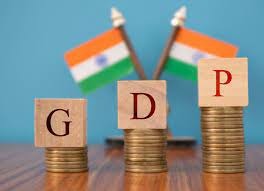India’s economy surpasses forecasts, expanding by 7.6% in Q2
Thanks to boosts from government expenditure and manufacturing, India’s GDP expanded at a faster-than-expected pace of 7.6% during the July–September quarter, maintaining its position as the largest economy in the world with the quickest rate of growth.
Most forecasts, including the Reserve Bank of India’s (RBI) 6.5% growth projection, were outperformed by the GDP’s 7.6% increase.
According to official figures issued on Thursday, the increase compared to 6.2% in the same quarter last year and 7.8% expansion in the previous quarter.
India’s GDP growth from July to September exceeded China’s 4.9% increase, while the Western economies are collapsing due to rising energy and interest rate costs.
A major factor behind the unexpected GDP growth—which shows that the recovery is continuing despite the unfavorable geopolitical environment—was the manufacturing sector’s acceleration, which saw it soar to a nine-quarter high of 13.9% from 4.7% in April and June. However, demand from agricultural and private consumption remained low.
The stronger-than-expected growth was hailed by Prime Minister Narendra Modi as an example of the Indian economy’s resiliency.
The GDP growth figures for the second quarter show how strong and resilient the Indian economy is in the face of such challenging circumstances on a global scale. In a post on X, the previous Twitter platform, he said, “We are committed to ensuring fast-paced growth to create more opportunities, rapid eradication of poverty, and improving ‘ease of living’ for our people.”
The manufacturing sector saw buoyancy due to a favorable base, increased volume growth, and improved profit margins as a result of ongoing deflation in input costs. good demand from the infrastructure sector was reflected in the steel and cement sectors’ good performance. Other factors that helped were decreased input prices, which increased profitability margins, and stable domestic demand in industries like the car industry.
The real GDP grew by 7.6% in the second quarter of FY 2023. The finance ministry said in a post on X that “the real GDP growth has surprised on the upside by being higher than both their highest estimate of 7.4% percent and their median projections of 6.8% percent by professional forecasters.”
The Indian economy will easily expand at 6.5 percent in the current fiscal year, according to Chief Economic Advisor V Anantha Nageswaran, and the growth trend will continue in the December quarter.
In the preceding quarter, government expenditure contracted by 0.7%; this time, it increased by 12.4%.
However, private consumption fell from 6% to 3.1%, mostly as a result of a decline in rural demand. The meagre rise of 1.2% in the agriculture sector served to highlight the lack of demand in rural areas.
According to DK Srivastava, chief policy advisor at EY India, “the 2Q FY24 real GDP growth at 7.6% confirms that the Indian economy is well on course to meet, if not exceed, the annual growth target for FY24 (April 2023 to March 2024 fiscal year) at 6.5 per cent, as projected by the RBI earlier in October 2023.”
Upasna Bhardwaj, chief economist of Kotak Mahindra Bank, anticipated that growth will slow down in the second half of the current fiscal year.
“That being said, today’s numbers have given the full-year GDP numbers a big boost.”
The sharp decline in the services sector and the somewhat subdued performance in agriculture were counterbalanced by the stronger-than-expected industrial performance. The growth rates of the agricultural and services industries were a meek 1.2% and 5.8%, respectively. Perhaps as a result of the unremarkable kharif planting season, the agriculture sector had its worst growth in eighteen quarters.
In terms of demand, private final consumption expenditure (PFCE) increased somewhat in the second quarter, while gross fixed capital formation (GFCF) and government final consumption expenditure (GFCE) also saw double-digit increases.
The five-quarter high of 11% rise in GFCF indicates that government capital expenditures will likely continue. During the 2Q FY24, the aggregate capital expenditures of the Union and 26 states increased by 26.7% year over year. GFCE reached a ten-quarter high, rising 12.4% year over year.
In contrast to the previous quarter’s 7.7% decline, exports increased by 4.3% this quarter.
According to government statistics, the output of eight important infrastructure sectors increased by 12.1% in October 2023 compared to a 0.7% rise in the same time last year due to a strong increase in the production of coal, steel, cement, and power.
According to figures provided by the Controller General of Accounts (CGA) on Thursday, the government’s fiscal deficit at the end of October approached 45% of the full-year budget forecast.
“We expect RBI to take note of the stronger growth momentum in the current year and the likelihood of a fresh buildup of inflationary pressures, particularly if food inflation gets affected by the El Nino weather events,” the statement reads, referring to the next monetary policy meeting. Even though system liquidity may be maintained reasonably tight, we think a rate rise is improbable. Over the next six months, a rate decrease decision seems improbable, according to Acuite Ratings & Research Chief Economist Suman Chowdhury.
According to Aditi Nayar of Icra, the upcoming Parliamentary Elections may cause a slowdown in the government’s capital expenditure pace, which might limit growth prospects in the second half of the fiscal year.
The revised growth prediction for FY2024 is 6.2% instead of 6.0% due to the better-than-expected Q2 results.







